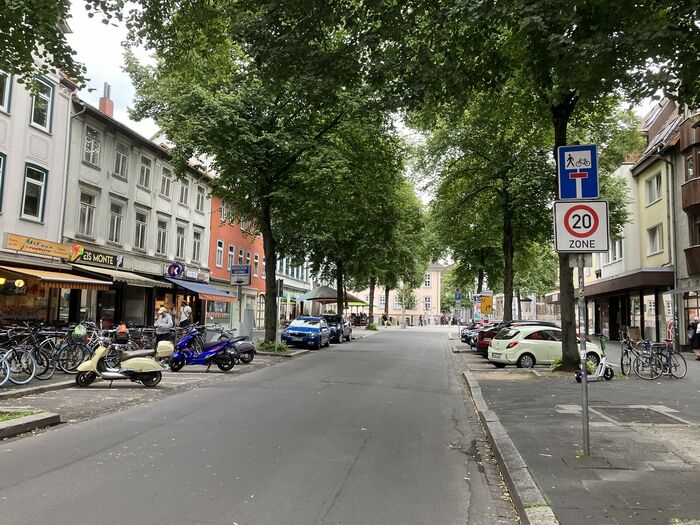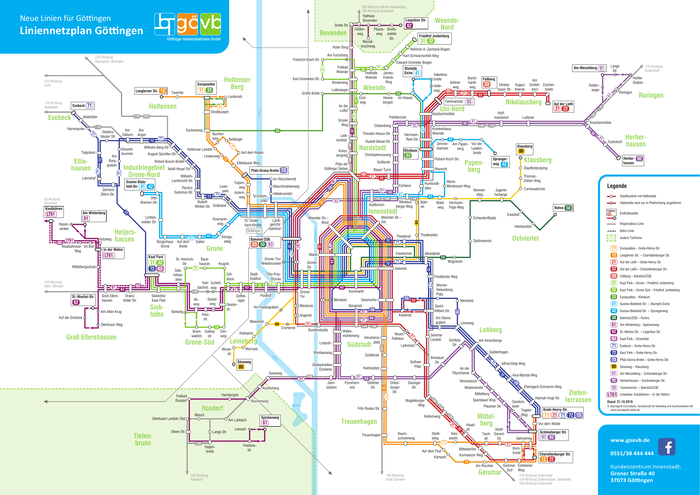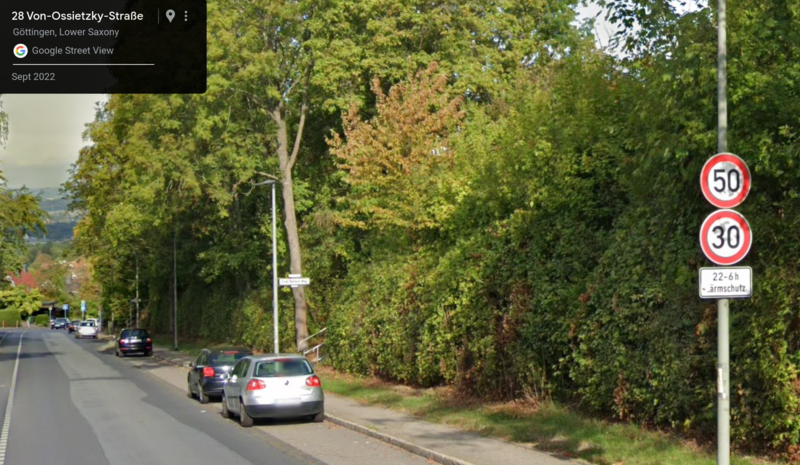I spent four days in Göttingen over the summar, and its transport system makes an interesting parallel to Oxford.
Göttingen is also a university town, with maybe two thirds to three quarters the population of Oxford. It lacks geographical constraints as severe as the rivers are for Oxford, but does have a mountain ridge coming in on the east (and hence only a partial ring-road). It also has narrow medieval streets (it wasn't that badly bombed during the war). And it has high cycling rates and a public transport system that is largely dependent on buses -- there is no tram or metro system, and as with Oxford the railway system serves longer distance trips.
A _lot_ of buses transit through the city core, using a one-way loop because of the very narrow streets (a bit akin to the 2018 Phil Jones proposals for Oxford). Instead of double-decker buses Göttingen runs articulated buses, which perform some turns that only just seem possible. One-way articulated buses restricted to a single narrow carriageway feel remarkably like trams and with a 20km/hr speed limit are unintrusive.
The city centre bus routes are shared with people cycling, which seems to work ok with one-way buses that don't overtake one another, preventing the dangerous movements that Oxford gets on High St, St Aldates, George St, etc. A 20km/hr (12mph) speed limit in much of the centre also helps -- motor traffic simply doesn't overtake people cycling (though there are no cycle symbols on the roads, which in Germany would make that illegal). And these streets always widen at bus stops to allow people cycling to bypass stoppped buses.

Cycling rates are high, possibly higher than Oxford's, with a similarly broad use - people of all ages cycling, wearing ordinary clothes with few helmets - though I've seen fewer cargo cycles and children and more students / young adults. There are ~1800 (not full) cycle parking places at the railway station (from OSM), suggesting maybe 2.5x as many cycle-rail trips as in Oxford.
Central Göttingen offers a much better experience for people walking. A huge chunk of it is pedestrianised (some of it excluding even cycling, which works ok because there are high-quality east-west and north-south cycle routes) and there is much less motor traffic. The much better exclusion of non-bus motor traffic helps a lot -- I don't remember seeing a single taxi in the centre, and loading access is restricted to the mornings.
There are also fountains, public squares, and three playgrounds in the inner city, which are sadly lacking from central Oxford.
Central Göttingen has more shops than central Oxford. There is no equivalent of the Westgate, and there appears to be no satellite retail centres as big as Headington, let alone Cowley Rd. (There is a big "Kauf Park Göttingen" shopping mall on the motorway that runs along the western edge of the city, perhaps the equivalent of Oxford's ring-road retail parks.) The university is also localised to campuses, with nothing like Oxford's colleges. So the city centre contains continuous runs of small shops.
Things are more car-centric outside the centre, however. A very wide inner ring road runs clockwise from south-east to north-east around the cithy centre. My one trip out of the centre, south-east towards Giesmar, suggests a lot of cars and much lower cycling rates (it is the hilliest bit of Göttingen).
In general the cycling infrastructure seems better than Oxford's. Side streets mostly don't carry through traffic (low traffic neighbourhoods are widespread), while the most common approach on main roads is on-footway tracks. These are often too narrow and lack buffering from motor traffic, but they have much clearer continuity across side roads than in Oxford (say on Woodstock or London Rds) - and they are also flat and distinguished by subtle red colouring. There are some exceptions: the street above is 50km/hr (30mph), at least during the day, but has no cycling infrastructure (there is apparently a proposal going around to put some in).
There was a referendum on proposals to improve the cycling infrastructure, where the details of the projects proposed illustrate both the existing provision and the problems with it. (Not unsurprisingly, there was clear support for the general approach but less for a pile of specific projects all lumped together.)


